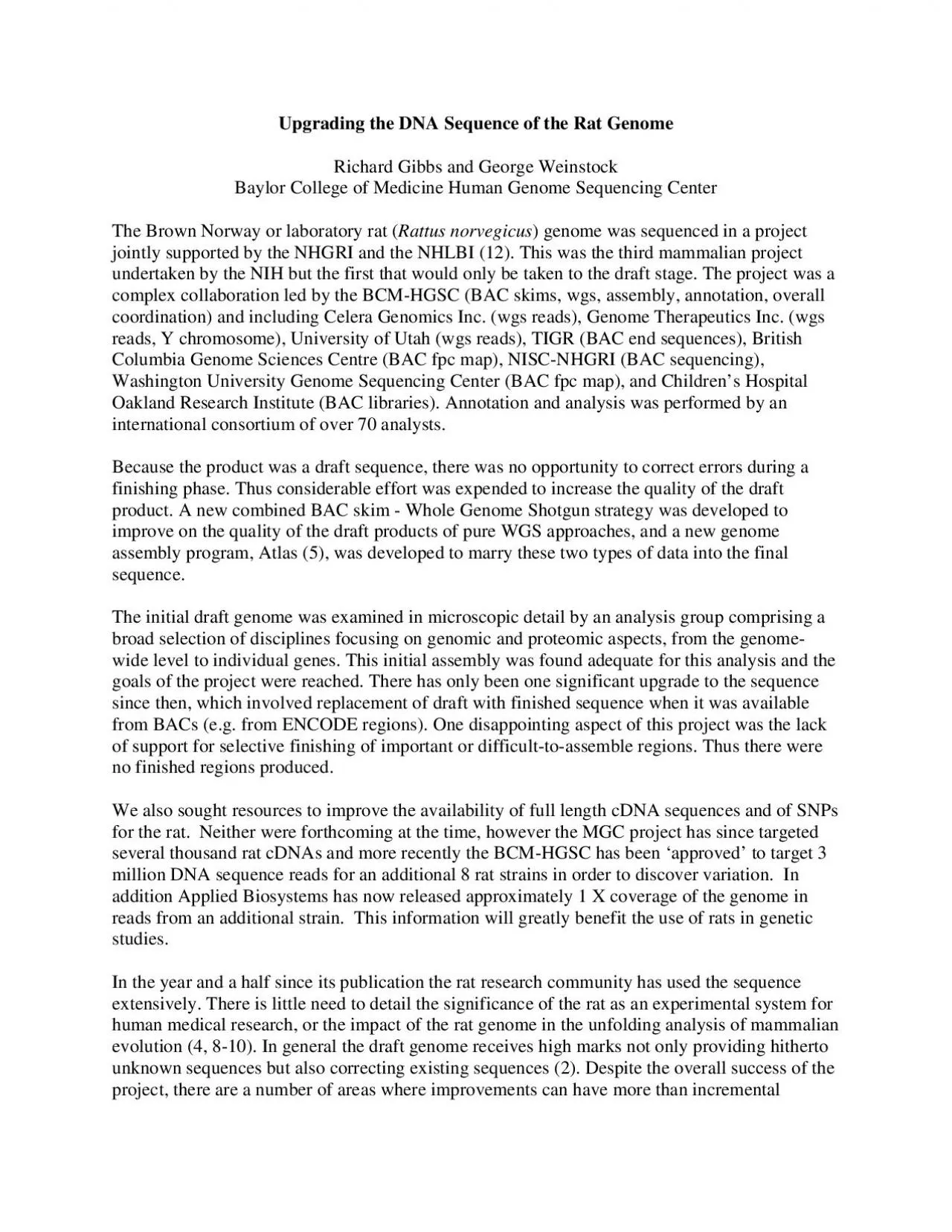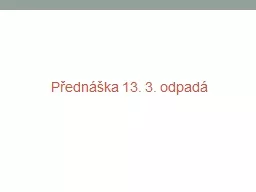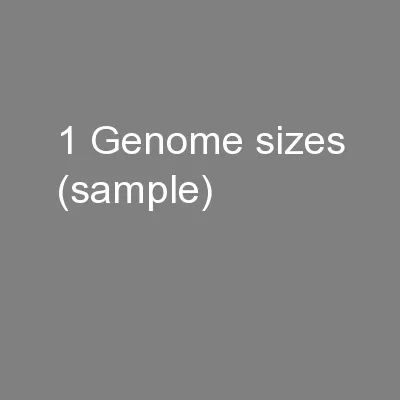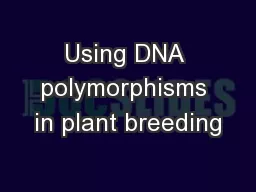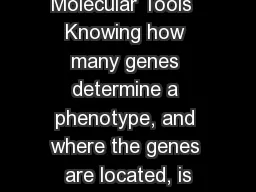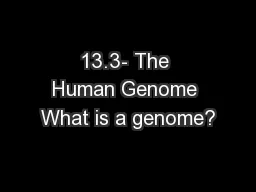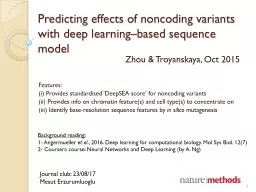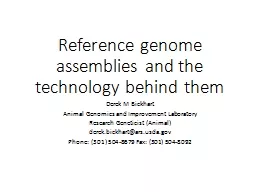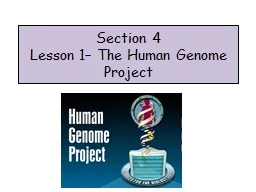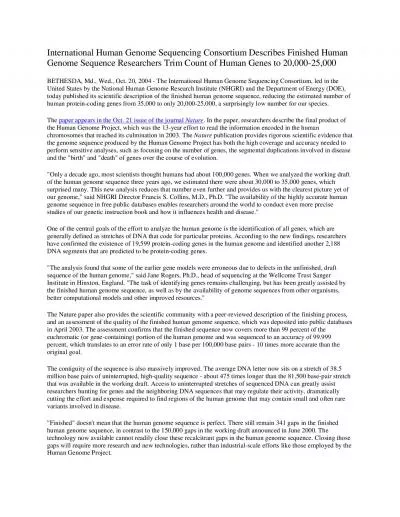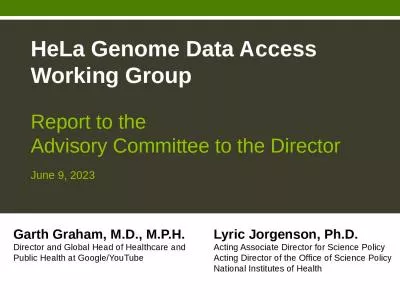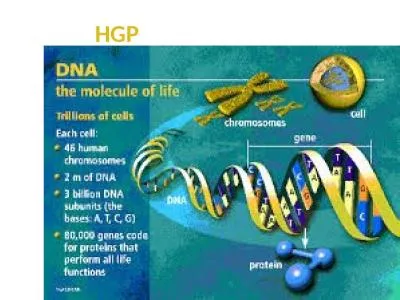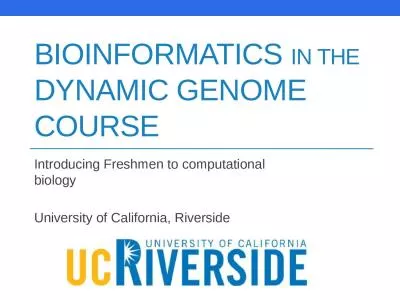PDF-Upgrading the DNA Sequence of the Rat Genome
Author : evelyn | Published Date : 2022-09-06
Richard Gibbs and George Weinstock man Genome Sequencing Center genome was sequenced in a project 12 This was the third mammalian project complex collaboration
Presentation Embed Code
Download Presentation
Download Presentation The PPT/PDF document "Upgrading the DNA Sequence of the Rat Ge..." is the property of its rightful owner. Permission is granted to download and print the materials on this website for personal, non-commercial use only, and to display it on your personal computer provided you do not modify the materials and that you retain all copyright notices contained in the materials. By downloading content from our website, you accept the terms of this agreement.
Upgrading the DNA Sequence of the Rat Genome: Transcript
Download Rules Of Document
"Upgrading the DNA Sequence of the Rat Genome"The content belongs to its owner. You may download and print it for personal use, without modification, and keep all copyright notices. By downloading, you agree to these terms.
Related Documents

